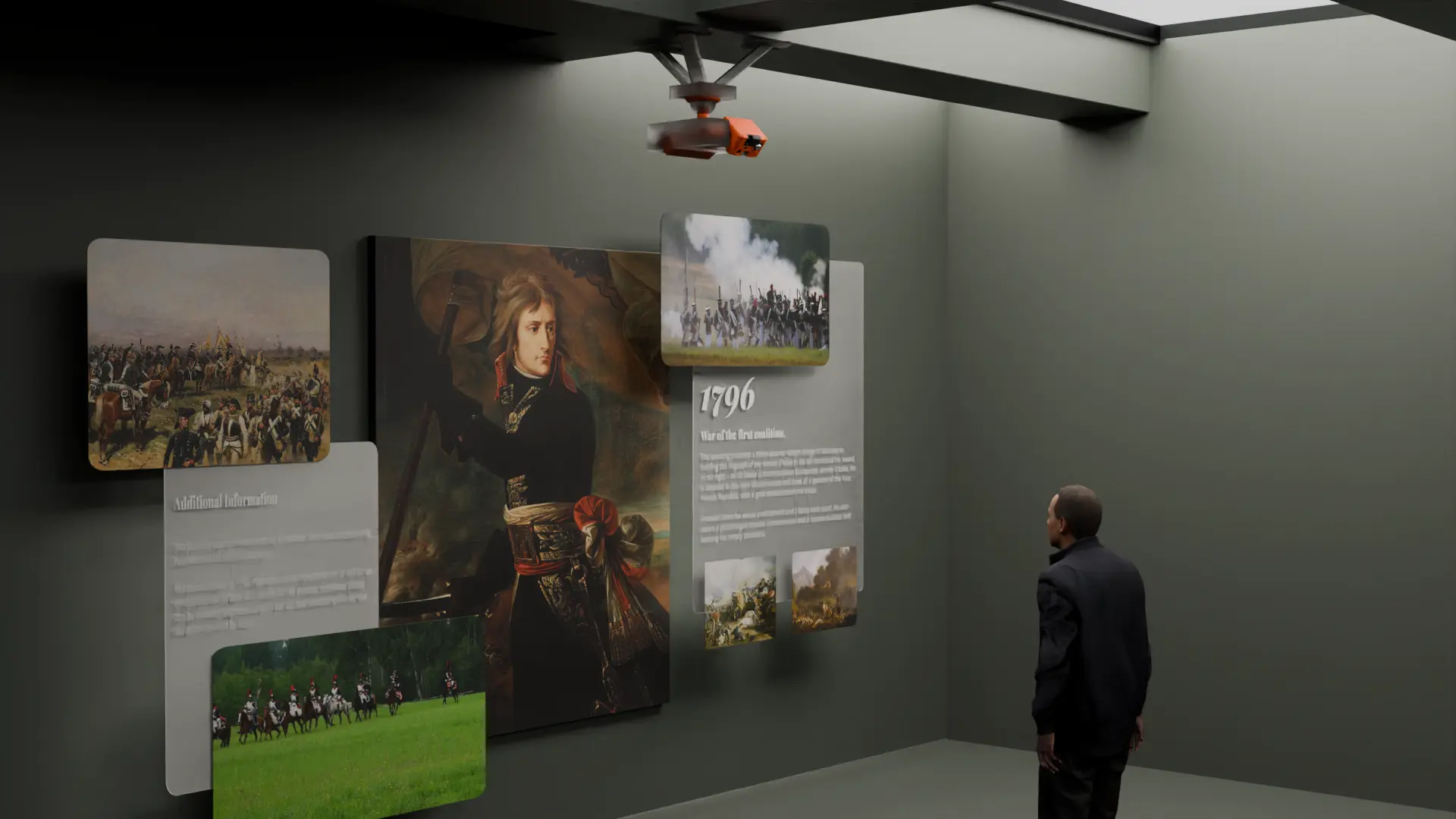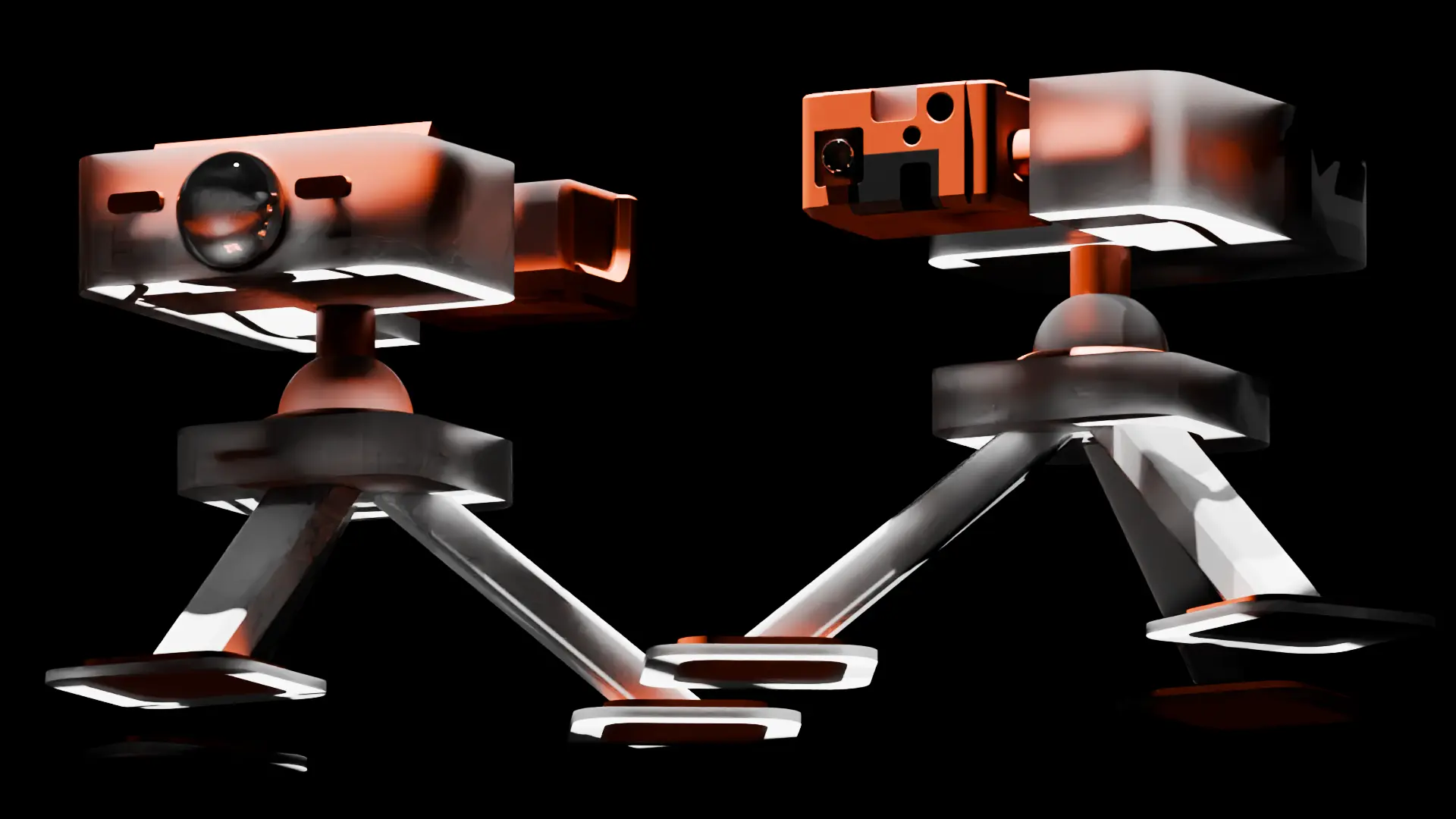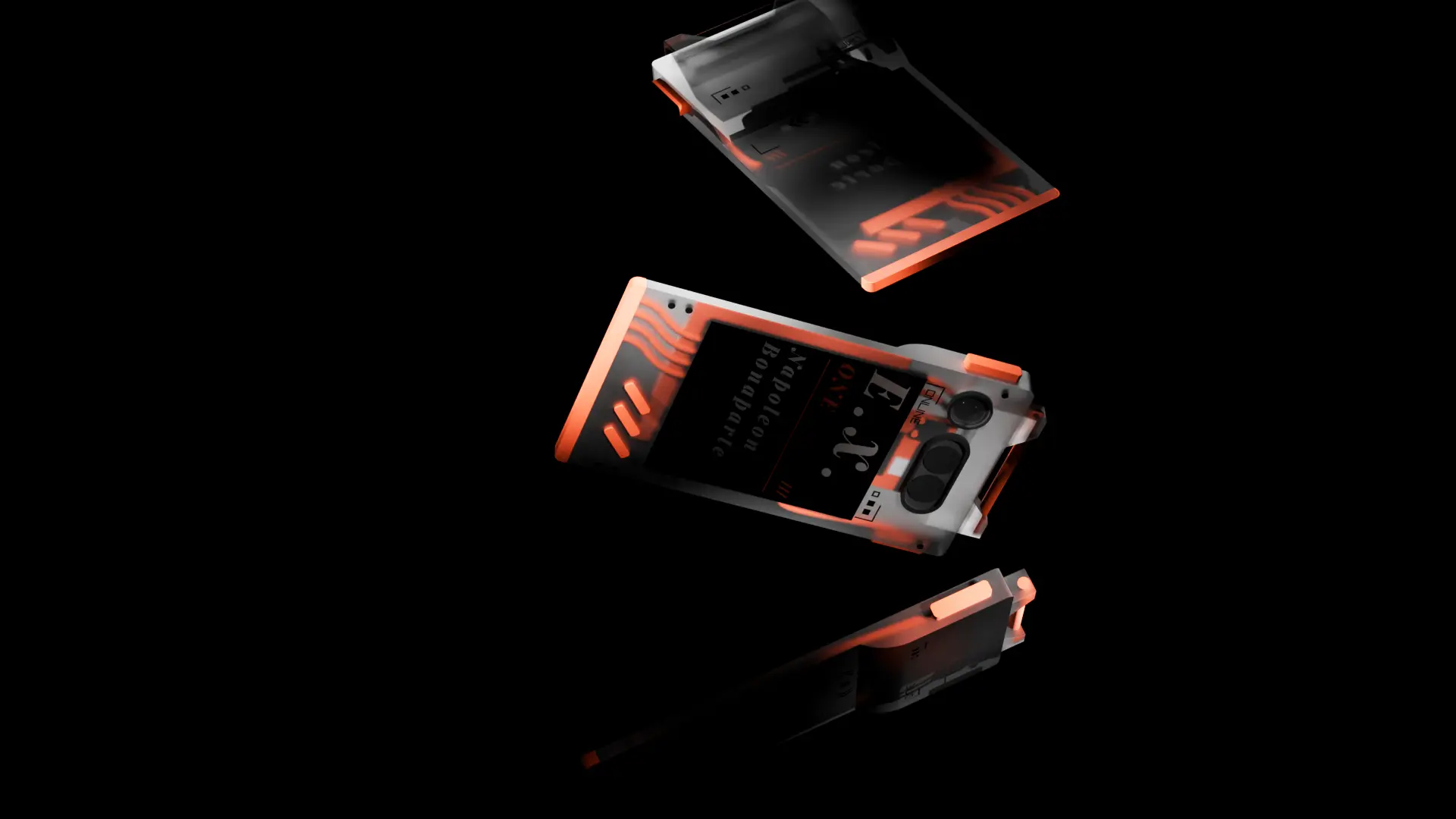Exhibitions Beyond Immersive Augmented Reality
Richard Oo

Richard's project, Exhibition beyond Immersive Augmented Reality, aims to enhance museum experiences by seamlessly integrating augmented reality (AR) with physical exhibits.. Departing from the conventional method of personal device scanning, Richard explores creating a shared and seamless AR experience. Showcasing his trinket proposal through the example of Napoleon Bonaparte's history, visitors interact with paintings in a more immersive and intuitive manner, enhancing their museum journey.
Could you describe the outcome of your project?
The project's results will encompass a variety of concept visuals and designs, which are grounded in
my research. Following preliminary user testing of a prototype, the concept has proven to be
realistic, especially since it incorporates features from existing technologies like Apple's Vision
Pro. The visuals will elucidate the museum's layout and the exhibition setup, detailing the
placement of projectors,  and the interaction between the trinkets and the projectors.
and the interaction between the trinkets and the projectors.
The projector will detect the trinkets and will project the AR visuals based on where the
trinkets are located. So with the trinket, it can detect the hand gestures and movements so the
visitors can interact with AR visuals. The feature is referenced from the Apple Vision Pro hand
gestures and trinket will also determine what type of content the visitors will like based on how
and what content they interact with.
The feature is referenced from the Apple Vision Pro hand
gestures and trinket will also determine what type of content the visitors will like based on how
and what content they interact with.
Throughout this span of your project, what were some of the earlier prototypes you developed and how did you eventually get to this idea of having trinkets given to visitors?
One of my early prototypes was a virtual museum using Unreal Engine 5 and creating 3D renders with Blender. However, I decided to abandon this project because the concept has been widely explored, and I believe I lack the technical expertise with the software to further develop this idea. I've even considered using Unity to create a gaming experience, but once again, I find there's limited scope for innovation with that concept.
Your project seems exciting in the way that it studies and tries to identify areas of improvement in an existing user experience. Were there any other experiences that you thought of that could also benefit from integrating AR?
I think that there is potential for the use of AR in educational sectors, offering a dynamic method to present stories and information. This interactive approach would probably captivate the younger generation, transforming learning into a more engaging experience. Where traditional content fails to resonate, AR can seamlessly blend entertainment with education, enriching the learning environment and making complex concepts more accessible and enjoyable.
See Healing Emotions Through Interwoven Virtual Paint, and LINK
See Digital Stroll, Tactile Playgrounds, and The Tangibility Paradox
See Characraft, Digital Stroll, and Tangible Theatre